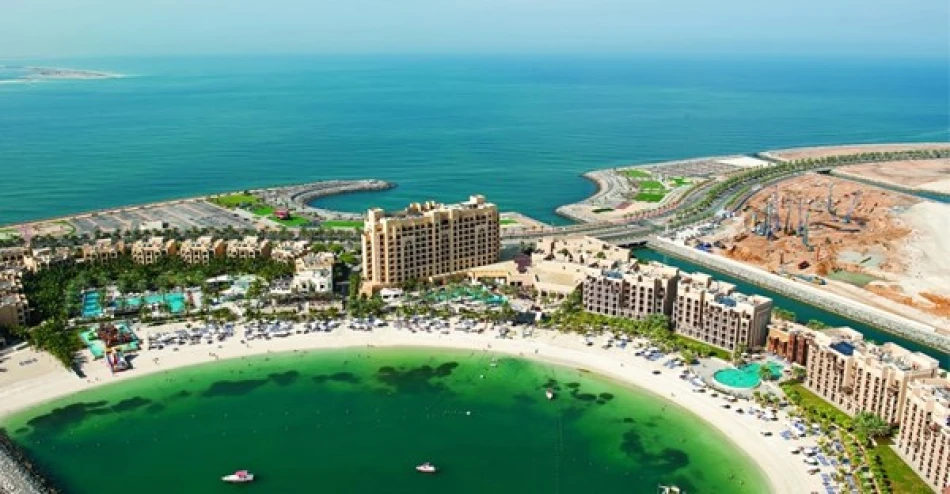
Ras Al Khaimah: Fastest Growing Real Estate Market in the Region
Ras Al Khaimah Emerges as UAE's Hottest Real Estate Market Amid Tourism Boom
Ras Al Khaimah has rapidly transformed into one of the UAE's fastest-growing property markets, driven by unprecedented tourism growth and major international developers entering the emirate. With 1.28 million tourists visiting in 2024 and demand for 45,000 additional housing units expected, the northernmost emirate is positioning itself as a serious alternative to Dubai and Abu Dhabi's saturated markets.
Property Market Surge Reflects Strategic Diversification
The emirate has recorded significant increases in both property sales volumes and prices over the past three years, marking a dramatic shift from its historically quieter real estate landscape. This growth stems from a deliberate economic diversification strategy that combines tourism infrastructure development with residential and commercial projects.
Major international developers including Emaar, Aldar, and Ellington Properties have joined established local players like Marjan, Al Hamra, and Ras Al Khaimah Real Estate Company. This influx of heavyweight developers signals confidence in the market's long-term potential and brings proven expertise from Dubai's property boom years.
Tourism Infrastructure Drives Residential Demand
The emirate's tourism success story directly correlates with its real estate momentum. Record-breaking attractions like Jais Flight—the world's longest zipline—Bear Grylls Explorers Camp, and 1484 by Puro restaurant, the UAE's highest-altitude dining venue, have elevated Ras Al Khaimah's international profile significantly.
This tourism infrastructure creates a multiplier effect: increased visitor numbers drive demand for hospitality workers, service providers, and support staff, all requiring housing. The projected need for 45,000 additional residential units reflects this demographic shift as the emirate transitions from a weekend destination to a year-round economic hub.
Investment-Friendly Regulations Attract Capital
Ras Al Khaimah's regulatory framework offers investors attractive incentives compared to more established emirates. The combination of competitive pricing, streamlined approval processes, and strategic location—just 45 minutes from Dubai—creates compelling value propositions for both developers and end-users.
Abdul Aziz Abdullah Al Zaabi, Chairman of Ras Al Khaimah Real Estate Company, emphasized the emirate's commitment to sustainable development that preserves its cultural heritage while attracting global investment. This balanced approach differentiates it from purely commercial development models seen elsewhere in the region.
Market Dynamics and Investment Implications
The emirate's real estate surge mirrors patterns seen in Dubai's early growth phases, where tourism development preceded major residential expansion. However, Ras Al Khaimah benefits from lessons learned during previous UAE property cycles, potentially avoiding the boom-bust volatility that characterized Dubai's market in the 2000s.
For investors, the market presents opportunities typically associated with emerging destinations: lower entry costs, higher potential returns, and first-mover advantages. The presence of established UAE developers reduces execution risk while maintaining growth potential.
Sustainable Growth Model
Sameh Muhtadi, CEO of Ras Al Khaimah Real Estate Company, expressed confidence in maintaining current momentum, citing exceptional efforts over the past two years. This measured optimism reflects awareness of regional market cycles and the importance of sustainable development practices.
The emirate's approach emphasizes quality over quantity, focusing on unique tourism experiences and residential projects that complement rather than compete directly with neighboring emirates. This strategy positions Ras Al Khaimah as a premium alternative rather than a discount option, supporting long-term value appreciation.
Regional Competition and Market Positioning
Ras Al Khaimah's emergence challenges the traditional Dubai-Abu Dhabi duopoly in UAE real estate. Its success demonstrates growing investor appetite for diversified exposure within the UAE market, particularly as established emirates face capacity constraints and higher pricing.
The emirate's tourism-led development model resembles successful strategies employed in destinations like Oman's Musandam region and Qatar's northern developments, where natural assets drive both visitor numbers and residential demand. However, Ras Al Khaimah's proximity to Dubai's international airport and business districts provides unique connectivity advantages.
Most Viewed News

 Layla Al Mansoori
Layla Al Mansoori






